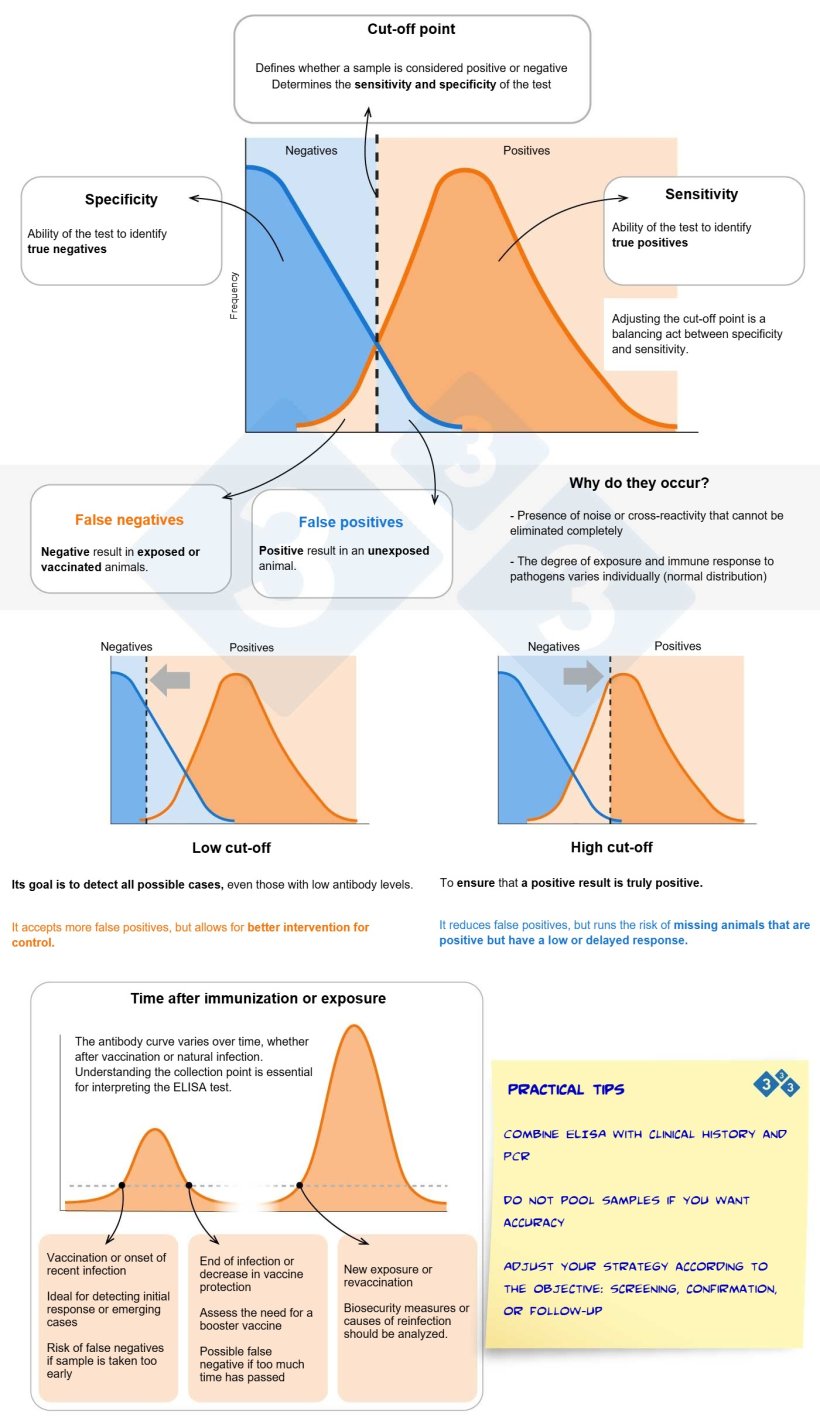The cut-off point in ELISA tests directly influences the sensitivity and specificity of the diagnosis. Choosing a higher or lower cut-off involves a balance with a direct impact on the detection of positive or negative animals, affecting diagnoses, sanitary control strategies, and biosecurity measures.
This material practically illustrates the implications of these choices, highlighting the risks of false positives or false negatives, the importance of sample timing, and tips for better use of this tool. With this in mind, you can adjust your interpretation according to the objective: screening, confirmation, or monitoring.







